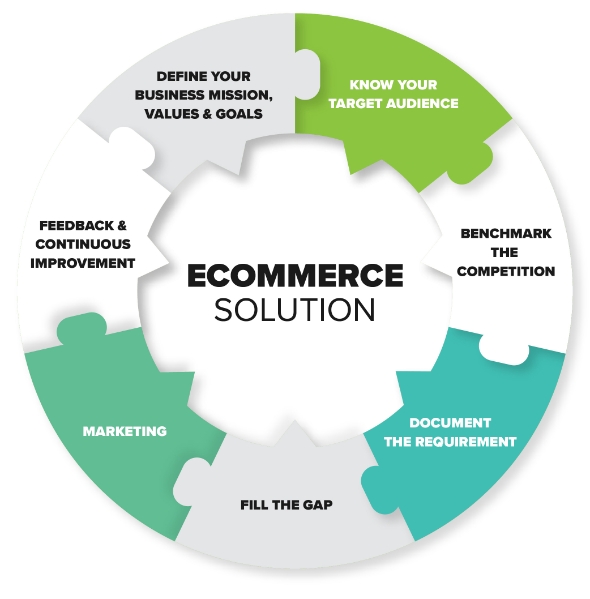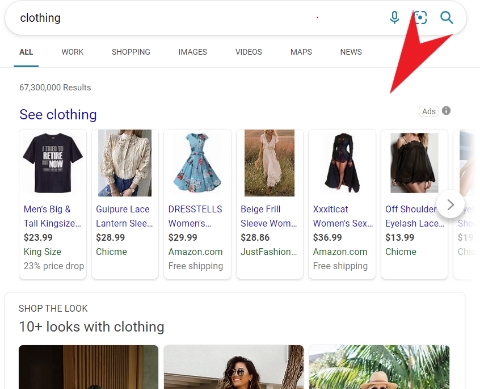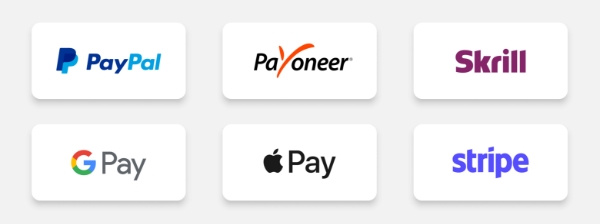The 2020 shutdown proved catastrophic for many small businesses who didn’t know how to start an e-commerce website. Without a way to adapt to an online or distanced environment, revenue went down, and doors were ultimately closed.
While many areas have opened back up, businesses are finding it difficult to be fully staffed, leading to more closings. Without a proper way to operate digitally, you could see more of these negative effects as well.
Going into 2022, it’s important that your business be prepared for whatever may change. We could see another shutdown, the economy could get worse, and much more. With the major steps we outline below on starting an e-commerce website, you’ll be ready to weather the storm and keep your doors open.
What is an E-commerce Website?
If you’re not sure what an e-commerce website is, don’t worry. Odds are you use one regularly! An e-commerce website is just a fancy term for an online store. Companies, like Amazon and eBay, have their entire business models dedicated to this kind of storefront.
Once the internet became more popular, many businesses put up online storefronts where customers can shop from the comfort of their own home. Now it’s to the point where you don’t even need to leave your house for groceries or fast food!
The best part about e-commerce websites is that it’s not an either/or deal. You can easily have a brick-and-mortar store while having an online store. The more options customers have for buying your good or service, the more sales you will get. Flexibility is the name of the game, and an e-commerce website is one of the most effective ways to incorporate it.


 Step One: Research, Research, and More Research
Step One: Research, Research, and More Research
No good essay is done without an outline, and no good website is done without a concrete plan. A critical thing to understand about e-commerce websites is that there isn’t a one size fits all approach. Depending on what you provide, who your customers are, and where they shop, your online storefront will differ from many others.
One of our service-based clients, Clean Extreme, offers a way to schedule your appointment online. Obviously, they don’t sell products, so there won’t be an online store. However, they list their prices upfront on the site, so it’s easy to know how much you’ll pay and when technicians can come out to treat your home.
Other businesses will use a subscription-based model. The company Loot Crate encourages customers to pay monthly for a series of items. They then deliver their products at regular intervals.
Some of the questions you need to ask yourself are “What am I selling?”, “Who am I trying to sell to?”, “How are my competitors selling online?” and “How will this fit in with my existing business model?”. Look at some trends. See what strategies are proving most popular. Think about your ideal customer and where to shop. A lot of this will be similar to putting together a regular business plan, which means that this will likely be familiar to you. Just ask yourself those basic questions once again, but with online service in mind.
 Step Two: Pick the E-Commerce Platform that Fits Your Needs
Step Two: Pick the E-Commerce Platform that Fits Your Needs
There are a few ways to go about constructing an e-commerce website. You can build it yourself or you can use one of many pre-existing platforms. While building it yourself will ultimately give you much more control and flexibility, it is often outside of most people’s technical knowhow. If you’re an avid web developer or have one on your team, then this may be the route for you.
For most businesses, we recommend using one of the pre-existing e-commerce platforms, such as WooCommerce with WordPress, Shopify, and Squarespace. This route will also save you a lot of time and energy that would be required in building an e-commerce website from scratch, as these programs already contain the plugins you need, like payment information and shipping calculators.

 Step Three: Get a Domain Name
Step Three: Get a Domain Name
A domain name is just the name of your website. Amazon.com, Walmart.com, and ebay.com are all examples of domain names. We recommend getting a URL that reflects your business name. Ours is greenbaumstiers.com, which is a shortened version of our full company name.
You may run into an issue where someone else already has the domain name you want. You can either alter your desired domain name or you can offer to purchase it from the owner. Keep in mind that owning a domain is a regular fee that you’ll need to keep up with. That said, it’s usually relatively small.
You can purchase a domain from GoDaddy.com, Hostgator.com, or Bluehost.com. You’ll need to register a domain name, then purchase the hosting privileges to keep your website up and running.
 Step Four: Pick a Payment Provider
Step Four: Pick a Payment Provider
A critical component of any e-commerce website is a payment gateway provider. This way, you can ensure that your customers can plug in their payment information safely and easily. This isn’t just some add-on that you throw onto your website, though.
Services like PayPal, Dwolla, and Stripe are just some examples of a payment gateway provider. Each provider has their own service fees and requirements, so we encourage you to do some research as to which one would suit your business model the best.

 Step Five: Build Your Website
Step Five: Build Your Website
Now comes the building process. Thankfully, with many of the website tools listed above, you don’t have to know how to build an e-commerce website on a professional level. Most site builders have e-commerce website templates built in, which means you can just select it and most of the main work is done for you.
However, if you ultimately want for flexibility and customization, having a professional do the work for you is the best route. It will be more expensive and time-consuming, but you’ll end up with a final product that will be more finely tuned to your needs.
Below are some things to keep in mind when putting together your e-commerce website:Develop a Layout – A layout is the overall look of your e-commerce website. What do you want customers to see the moment they visit your site? Will you feature deals? How many items will you show on a product listing page? These are the questions to consider. This will obviously depend on your business model as well as your target customers. As stated above, many e-commerce website builders will already have many templates in place to choose from, which will give you a solid foundation for your layout.
Style Guide – Having an e-commerce website style guide will give you a consistent theme or design to stick with. You want to use a color scheme across your entire website where each page compliments the other. Picking colors based on your logo or industry is typically a smart way to go. You should also decide what sorts of fonts and sizes you’ll want for your text. Whatever you decide, it’s important that everything be consistent in every web page.Directory – You want your website to be readable to customers as well as search engines. This means that your website should have clearly defined categories in the header with subcategories that make sense for what you offer. Additionally, you want the URL for your pages to reflect your categories.
For example: if a customer visits a clothing store called Mike’s Apparel and clicks on the header category “Men” then clicks “Jeans”, your URL should look something like this:
https://www.mikesapparel.com/men/jeans
This not only makes your website easy to navigate, but it also makes it easier for Google to categorize your content, which increases the likelihood of it ranking higher on search engines.
Optimize Every Page with SEO in Mind – Every single page on your e-commerce website should be optimized for search engines. This means that every page should have a target keyword, be easy to understand, and have a clear URL.
For example: you’re running an online mechanic shop where you sell some of your car parts. You have a page for a catalytic converter for a Ford Mustang. When using SEO best practices, you’ll want to make sure the focus of that page is for “catalytic converter Ford Mustang” or another key phrase to that effect. Make sure that key phrase is not only in the URL but in the product title and product description as well. Include a clear image and price tag, and Google will be able to understand it better. As a result, that product page will rank higher on search engines anytime someone types in “catalytic converter Ford Mustang”.
 Step Six: Set Up Storefronts on Larger Websites
Step Six: Set Up Storefronts on Larger Websites
The unfortunate reality is that people like to shop where they’re most comfortable. That means that it’s hard to get them to shop on a website they haven’t been to before. However, instead of folding your arms in frustration, you can meet those customers where they are!
Amazon makes it fairly simple to set up a storefront on their website. Obviously, you’ll have to pay a fee to Amazon to do so, but the increase in revenue is almost always worth it. Additionally, eBay makes it simple to put together a business page and sell your products there as well. The more people see your products on places where they already shop, the more likely they are to shop on your website in the future.
It’s important to note that third-party websites, like Amazon, Wal-Mart, or eBay, shouldn’t be your only e-commerce storefront. While they’re simple to use, you have little control over your page and can be removed for any reason. That’s why we recommend doing this in addition to setting up your own e-commerce website.


 Step Seven: Promote Your E-Commerce Website
Step Seven: Promote Your E-Commerce Website
Now that you have built your e-commerce website and ironed out the fine details, you are ready to launch. There will be minor hiccups here and there, so it’s important to keep a sharp eye on it to ensure that everything is functioning correctly. Many companies hire people specifically to run their websites, so it may be in your best interest to bring on a freelancer or web developer if you don’t have the time to do it yourself.
However, that doesn’t mean your job is over. Your website is done, but you want to encourage people to use it. Use your other marketing avenues to promote it, such as your social media pages or email campaigns. Incorporate an introductory special offer or referral bonus for those who use your website to gain more site traffic.
Focus on your target customers when promoting your new e-commerce website. What social media apps do they use? What sorts of things do they search for online? Do they read their emails? Put yourself in the shoes of your customers and figure out where they like to spend their time online.
One popular way to promote your e-commerce website is through Google Shopping ads (see image above). By using those, you can get product links placed right at the top of the search results page when people type for relevant keywords attached to them.
